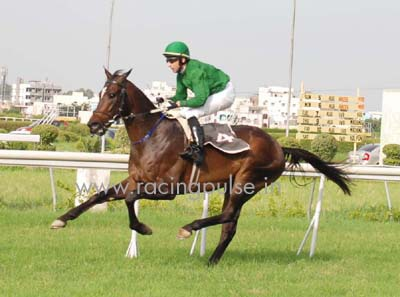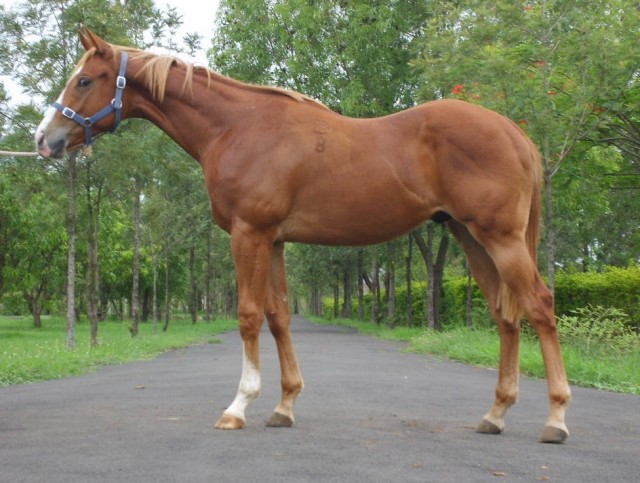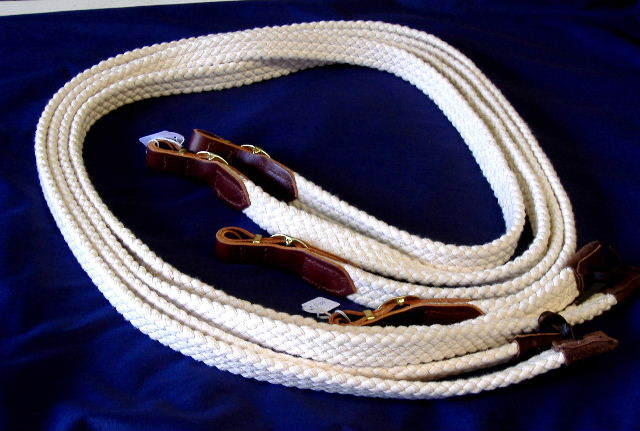QuestionQUESTION: I have a 9 year old mare that I picked up at the age of 6 with little training. We were doing really well....walk, trot and cantering when some major changes happened in my life and as a result she didn't get ridden for awhile. When we got back into it things were going pretty good except when we would move into the canter she would take 4 or 5 strides and then put the brakes on and buck (she usually only needs one buck cause somehow she catches me off guard every time). I lunge her before we ride almost always as she is usually quite excited and needs to relax in order for us to have a good ride. She canters fine on the lunge line without having to fight to get her to go. I don't have to fight to get her into the canter under saddle either I just can't keep her there. Not sure if I move my position forward on the canter and that's what makes her stop. We go over jumps at a trot and she loves that....most of the time she looks for the jumps instead of avoiding them so I can't see that she is sore in anyway. Just looking for some tips or ideas - any help would be great!
ANSWER: Connie,
How long was it that you and your mare had a break? Did you start her back slowly, taking the time to muscle her up and strengthen her on the lunge line (which is quiet, consistent work, and being aware of your energy and making certain that you never chase her or crack your lunge whip).
Bucking at the canter is often a sign of a horse being unbalanced, not sure of the footing, or lacking the strength and muscling to physically deal with cantering on a circle, even without weight.
Is she BALANCED when she canters on the lunge? Is it a collected and easy canter, or is she "motorcycling", and speeding up or down? Is she relaxed, and when you ask her to trot and walk, does she do so readily and quietly?
What kind of tack do you use on her head? Are you using a bit, and if so, is it mild? It needs to be. if you are not sure of your contact, you may want to consider using a Biltess Bridle.
Bucking of course can be behavioral- a resistance. In that case, you need to ride her through the buck...ride her forward...not stop or do one-rein stops, and then reward her as soon as she is forward and not bucking.
All of these factors must be in place before you go back to cantering her under saddle, especially with what is going on. If she was off work, her back muscles probably changed. Does the saddle still fit? Horses will buck when their tack is uncomfortable.
How is your riding after a period of inactivity? Are YOU balanced and able to just help her when she canters and not interfere with her balance? Do you have an independent seat, hands, and legs?
All of these factors need to be considered when you are looking for the answer to your current problem. It is actually quite interesting-like forensic science, to determine how best to help your horse. She is obviously trying to tell you something....you have to determine what it is.
Please feel free to write back.
Mitzi Summers
www.MitziSummers.com
---------- FOLLOW-UP ----------
QUESTION: There was about a year break initially. I had started riding again and things had been going okay. We went riding out in the pasture with my family (there were four horses total) and everything was going good....we had cantered a few times with no issues. We decided to canter one last time before walking the horses out - Snappy and I went last which was an issue for her...I believe she thought she was being left behind and so attempted to turn our nice canter into a gallop. I discouraged this be sitting back and applying a small amount of pressure on the bit (she does have a very soft mouth and I try to keep no more than a "dimes" weight on the bit) this resulted in what I call a temper tantrum and I had a very bad fall that dislocated and broke my thumb....which resulted in another 6 months off.
I can get her to walk, trot and stop with voice commands....the canter requires a little more encouragement but once she is in the movement it is not hurried or disjointed.
She has a D-Ring snaffle bit. And I checked the fit of the saddle and there are no spots that would be pinching. And after lunging I always check the saddle again before I mount.
I have been told that I have soft hands, steady legs and a natural seat. I may however get a bit stiff in the body with her in the canter because I am concentrating on keeping my hands soft...so maybe my legs and seat are not independent at that time.
Snappy is my second horse, I have a gelding as well and we don't have these issues. I believe I am balanced but as I ride by myself I can't say that with any certainty. The gelding and I also jump up to 2 foot 6 inch (I know that's not very high but high enough for me).
I don't know if that gives you anymore insight but I thought you just might be interested to know the answers to all the questions you posed back to me.
I think I will continue working with the lunge line and riding the walk and trot without stirrups to make sure as a pair we are balanced and once I feel we are there then we will try the canter again.
Thanks for all your advice!
AnswerConnie,
You are most welcome.
I think you are on the right track. A fall is traumatic for rider AND horse, so you need many small successes to build confidence in each of you.
You are absolutely correct in that being last with horses cantering or galloping is a risky thing to do.
We usually only walk and trot on trail rides, and, if it is not far back to the barn, we make it a habit of only WALKING back.
Please feel free to keep in touch.
Mitzi
www.MitziSummers.com

 horse having longer stride
Question
longer stride
hello maam, this horse na
horse having longer stride
Question
longer stride
hello maam, this horse na
 deep ribcage
Question
deep ribcage
hello maam, does this hors
deep ribcage
Question
deep ribcage
hello maam, does this hors
 braided reins for racing
Question
braided reins
hello sir, what are the u
braided reins for racing
Question
braided reins
hello sir, what are the u
 trotting on the road
Question
road
hello. i am rohit from india. i ha
trotting on the road
Question
road
hello. i am rohit from india. i ha
 bad stallion
QuestionQUESTION: Hi Im 15 years old and have a beautif
bad stallion
QuestionQUESTION: Hi Im 15 years old and have a beautif